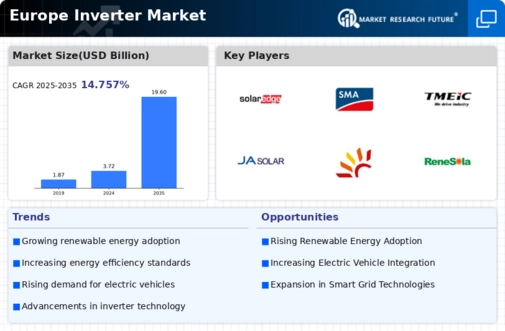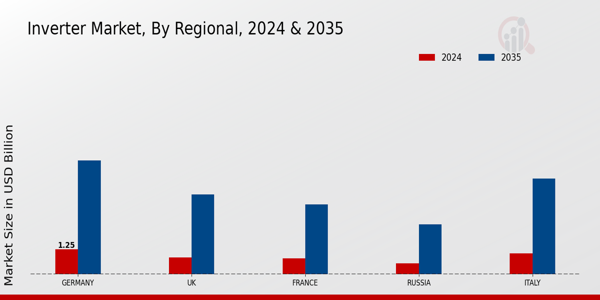The competitive landscape of the Europe Inverter Market is characterized by rapid innovation and a strong push towards renewable energy sources. In recent years, the market has seen significant growth driven by the increasing adoption of solar energy systems across both residential and commercial sectors. With ambitious sustainability goals set by various European nations, the demand for efficient inverter solutions capable of optimizing energy production has surged.
In this dynamic environment, different manufacturers are vying for market share by leveraging advancements in technology, enhancing product portfolios, and improving customer service. The competitive strategies employed by companies in this sector include forming strategic partnerships, investing in research and development, and expanding distribution channels, which are all aimed at meeting the diverse needs of energy consumers in Europe and ensuring compliance with stringent regulatory frameworks.
SolarEdge Technologies has established a formidable presence in the Europe Inverter Market with its innovative inverter technology that features advanced optimization solutions for solar panels. The company is well-regarded for its ability to enhance energy production while minimizing the cost of energy losses due to shading and panel mismatching. Its strengths lie in its robust portfolio of products that cater specifically to various customer requirements, including residential, commercial, and utility-scale applications.
Additionally, SolarEdge Technologies has successfully differentiated itself by incorporating monitoring and management systems that give users real-time insights into their energy usage and performance, thereby increasing customer engagement and satisfaction.
The company's strategic focus on expanding its market reach in Europe through strategic alliances and local presence positions it effectively to capitalize on the growing demand for solar inverters in the region.SMA Solar Technology holds a significant share the Europe Inverter Market, predominantly known for its diverse range of inverter products that serve various applications, including solar photovoltaic systems. The company’s strengths lie in its long-standing experience, cutting-edge technology, and commitment to quality performance in energy conversion.
SMA’s robust product lineup encompasses both string inverters and central inverters, ensuring that they address the varying needs of different plant sizes and configurations.
This versatility makes them a preferred choice among installers and end-users. Furthermore, SMA Solar Technology is actively involved in strategic partnerships and collaborations aimed at enhancing its market position, particularly in sharing technologies that bolster efficiency and reliability. The company's sustained investments in research and development have positioned it as a leader in creating robust, reliable, and efficient inverter solutions tailored the unique conditions of the European solar market. Through these initiatives, SMA continues to solidify its standing as a key player in the evolving landscape of renewable energy solutions across Europe.


























Leave a Comment